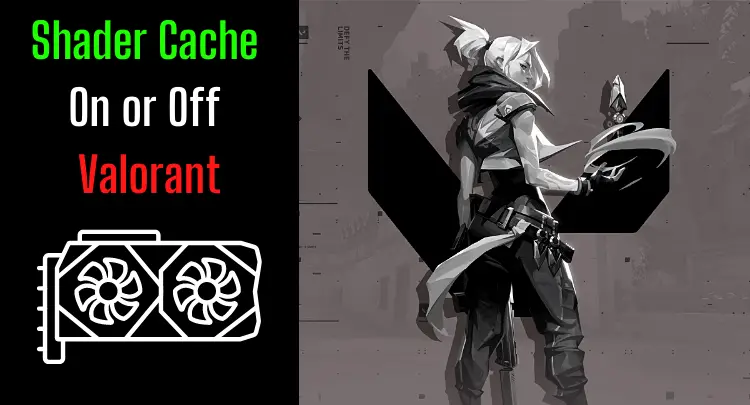Most Valorant players don’t know what the shader cache does and wonder if it should be used. Since we’ve been dealing with NVIDIA graphics cards, I think from the turn of the millennium, and we’ve been asking ourselves every game whether it’s better to disable it or not.
So what do we do? First, of course, we just try it out.
In general, for FPS games like Valorant, the shader cache prevents stuttering, reduces load times, and generates textures optimized for the graphics card. However, activating the shader cache can also lead to negative effects depending on the hardware used. Furthermore, there can be performance losses if the game does not support the shader cache.
We have already dealt with various setting options on our blog, and here you can find our previous articles on these topics. Today we will talk about the Shader Cache in the context of Valorant.
In our main article on the topic, we delve a little deeper and clarify what shader cache is and what size should be set. We also link you to this article further down in the “Related Content” section.
Note: This article was written in English. Translations into other languages may not provide the same linguistic quality. We apologize for grammatical and semantic errors.
Does Valorant Support Shader Cache?
Riot Games is a close partner of NVIDIA and of course, Valorant supports this very basic technology. There is no option to influence the shader cache in-game. Instead, the shader cache is managed via the NVIDIA control panel.
Why Is Shader Cache Important for Valorant?
FPS Games and especially Valorant calculate frames in real-time. Therefore, many components are involved in the rendering of a frame.
Besides the hardware and the actual game engine, cache mechanisms also play a big role because if calculations that have already been done can be saved and reused, then this saves computing power and shortens the rendering time at the same time.
The shader cache collects certain parts of the rendering, such as textures, and the graphics card can use the cache for future calculations.
Every unnecessary calculation costs the resources of the graphics card. If peaks occur because of this, it can lead to micro stutters that you perceive consciously or unconsciously. In this article, we have shown how micro stutters and FPS drops can influence your aiming:
Should I Use Shader Cache Or Not in Valorant?
There is really only one reason not to use a shader cache – a slow hard disk. This is because the graphics card offloads the calculations in the form of shaders to the hard disk.
So if you have an SSD hard drive (and pretty much all computers do now), you should use the shader cache, especially for an FPS game like Valorant.
If you are not sure what hardware you have installed or just want to try both options, then use an FPS analysis tool like the MSI Afterburner and just test it.
You can’t damage anything with this setting.
As long as you keep the scenario the same (same map, same mode, etc.), you can see very well if you get more performance by turning the shader cache on or off. I have already shown in this article how you can easily keep an eye on the frame rate and frame time with this tool:
Should I Disable the Shader Cache on an HDD for Valorant?
Most HDDs are powerful enough for you to use the shader cache here as well. However, micro stutters can occur depending on the read and write speed.
We, therefore, recommend simply running a test with an FPS analysis tool.
If you notice performance losses or want to replace the old HDD with a modern one anyway, we can recommend the Western Digital WDS500G2B0A with 500GB storage. Most media today is stored in various clouds or discords. Therefore, there is enough space for several games installed at the same time.
With this, the use of the shader cache is practically mandatory.
Final Thoughts on Shader Cache for Valorant
There are some settings around the graphics card that use other hardware, such as the hard disk, the RAM or the processor. If these settings are activated, then the hardware used should also be able to keep up with the speed of the graphics card, because otherwise micro stutters will occur.
If these settings, such as the shader cache, are not used, then this can lead to performance losses in rendering.
You will either get fewer frames per second (FPS) or worse looking textures.
There are other NVIDIA settings that are much more controversial, for example NVIDIA Reflex or DLSS. The shader cache will always give you an advantage in the vast majority of cases.
If you have a question about the post or pro gaming in general, write us: contact@raiseyourskillz.com
Masakari – moep, moep and out!

Former pro gamer Andreas "Masakari" Mamerow has been an active gamer for over 35 years, more than 20 of them in the competitive scene (Esports). In CS 1.5/1.6, PUBG and Valorant, he has led and coached teams at the highest level. Old dogs bite better...






